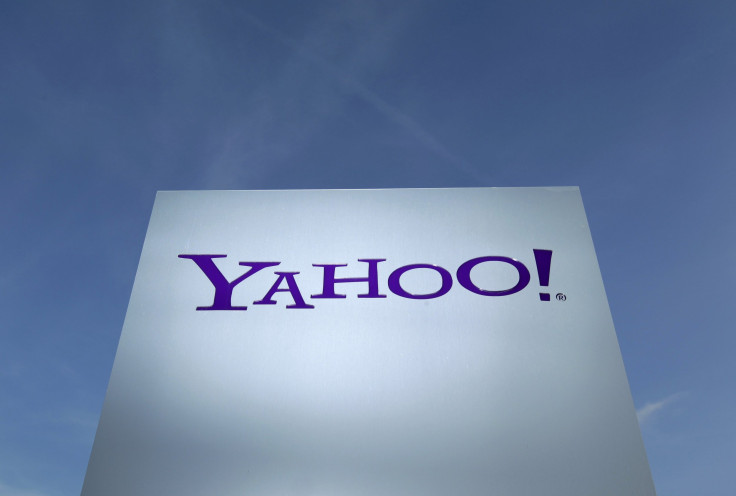Yahoo, Pandora Poised To Join Google, Facebook In Mobile Advertising’s $1B Club

Now that smartphones are everywhere, mobile advertising is, too -- and that means big money for many companies in tech, starting with Google, Facebook and Twitter, each of which already generates more than $1 billion annually in mobile ad revenue. The mobile advertising market was worth $31 billion last year and is only expected to grow. So, which companies are best suited to join the billion-dollar club next?
Yahoo Is On The Right Track
By some metrics, Yahoo broke the billion-dollar mark in 2014, but based on generally accepted accounting principles, the Sunnyvale, California-based Internet giant was only able to generate $768 million in mobile ad revenue last year. Still, not bad for a company that is essentially in rebuilding mode and transitioning to a "mobile-first" company, as CEO Marissa Mayer puts it.
Yahoo made strategic acquisitions last year that are sure to lead to even more mobile ad revenue in 2015. In July, it bought mobile analytics firm Flurry. In November, it acquired BrightRoll, a video-advertising platform. Last month, Yahoo announced that it plans to use those services to display ads on apps from third-party mobile developers.
"With games spending enormous sums for app installs and brands aggressively increasing their mobile spends for video, Yahoo is poised to do very well in 2015," said Johnny Won, founder of Hyperstop, a consultancy firm that helps ad agencies, ad-tech companies and startups understand mobile. Almost certainly, Yahoo will break into the billion-dollar club this year, Won predicted.
Pandora Plays An Impressive Game
Pandora also is likely join Yahoo in the billion-dollar club, too. In 2014, the Internet radio service notched more than $700 million in mobile ad revenue, up 58 percent year over year and making up 77 percent of total revenue. As Won puts it, it's impressive how well Pandora monetizes mobile apps.
One reason for that is just how easy it is for marketers to create ads for Pandora, which serves both audio and video ads. Brands already make audio ads for radio stations and make video ads for TV and YouTube, so it's not too difficult to translate that content onto Pandora, which has a base of nearly 82 million active listeners. And unlike traditional radio stations, Pandora can provide brands with analytics that show them how effective their ad campaigns are.

"What happens on Pandora is unavoidable. In an age where if I spend a dollar on a banner ad, you and I can ignore that every single day, but an audio ad that is on air on a mobile device, you can’t skip that,” Won said, adding that he would be surprised if Pandora didn't break the billion-dollar mark this year.
Up Next: Snapchat, Pinterest
Snapchat and Pinterest have only been testing advertising models for a short time and don't have much to show for it when it comes to revenue, but the two companies have been busy building out their audience and setting themselves up to cash in big once they do go all in on advertising.
Los Angeles-based Snapchat is believed to have a base of more than 100 million active users, many of whom are teens and young adults -- an audience that marketers constantly crave. And while Snapchat rose to fame with its photo and video messages that disappear seconds after they are opened, the startup has been busy adding features that get users to stick around longer.
"Stories" lets users view snaps shared by their friends in the past 24 hours, while "Discover" lets them see content from outlets such as Vice, ESPN and CNN. With users sticking around longer for this type of content, Snapchat began testing ads late last year, charging brands a reported $750,000 per day to line up video ads alongside users' stories. The challenge is for Snapchat to figure out the best ad models, said Michael Becker, co-founder and managing partner at mCordis, a mobile-marketing firm.
“What's interesting about a community like a Snapchat," Becker said, "is that they know a tremendous amount about their audience and the behavior of their audience, which allows the marketer to have a much higher targeted and predictive chance of matching and enabling that match between buyer and seller.”
Pinterest, meanwhile, has been testing ads in the form of "promoted pins" since 2013, but the startup initially limited this test to a few brands in the U.S. The company finally opened its ad gate to all U.S.-based brands on Jan. 1, signifying that generating revenue is now a key mission for the service, which counts more than 70 million active users.
Brands have been eager to get on Pinterest due to its users' reputation for using the service specifically to browse for products they are serious about purchasing. By opening up promoted pins to all U.S. brands, Pinterest should be able to significantly increase ad revenue.
Additionally, the company has been rumored to be testing a “buy” button that would allow users to purchase products directly through Pinterest. Should the company introduce such a function and prove its ads can also serve as one-click storefronts, it could draw even more advertisers and augment its revenue stream by taking a cut of every sale, Becker said.
“It's the company that identifies these new business models that will skyrocket to be the next billion-dollar player,” Becker said, “not the company that simply just tries to churn out the same buy-sell media models.”
© Copyright IBTimes 2024. All rights reserved.






















